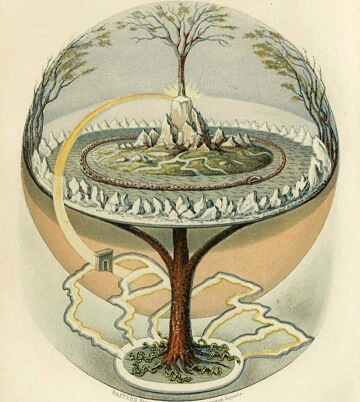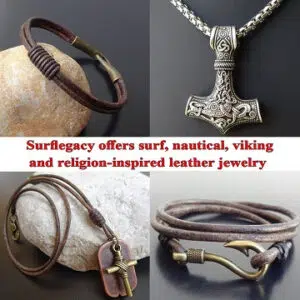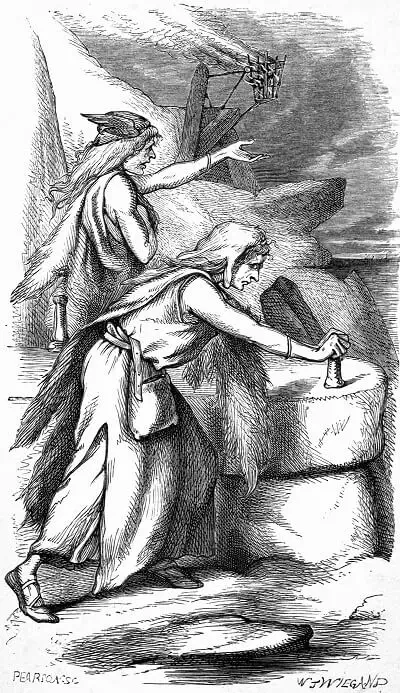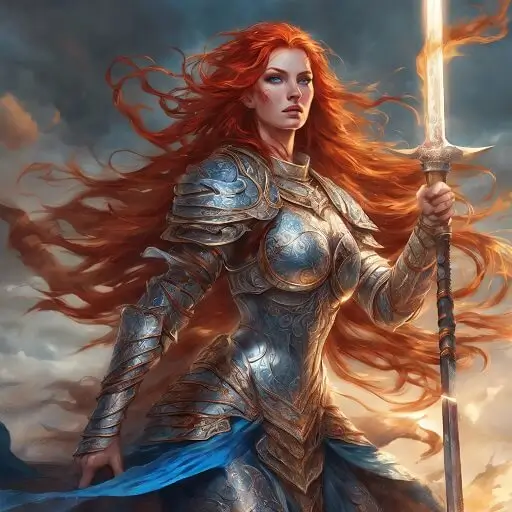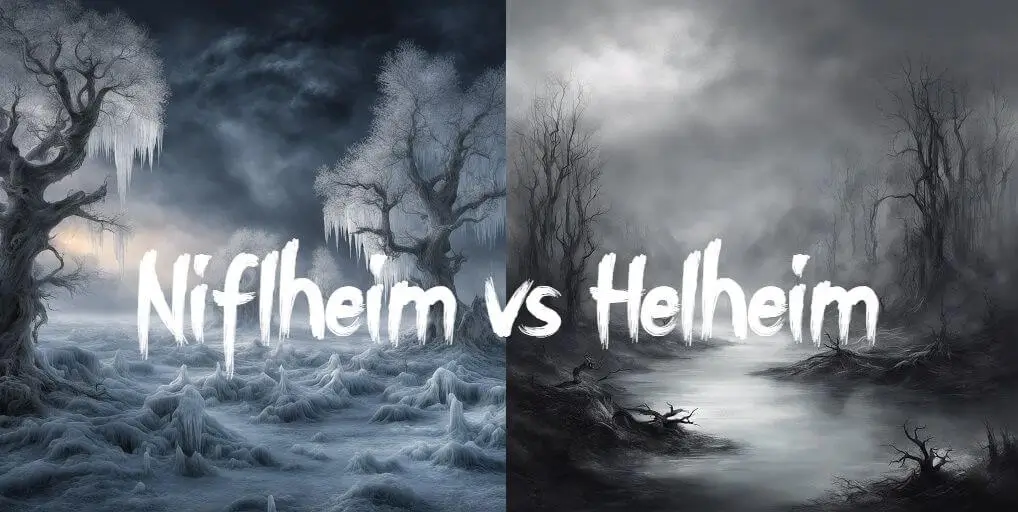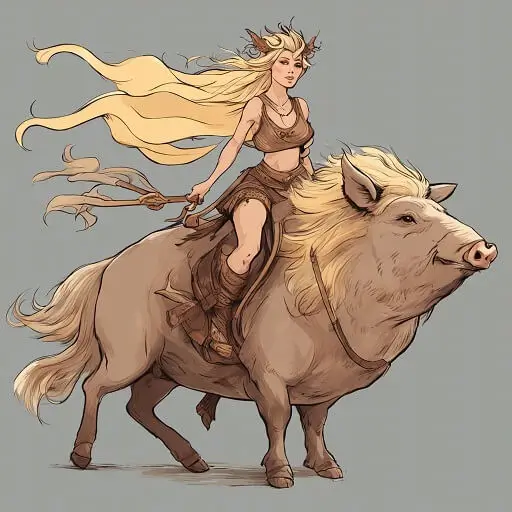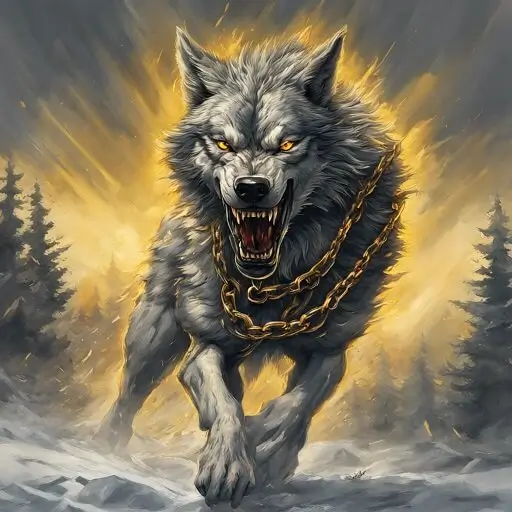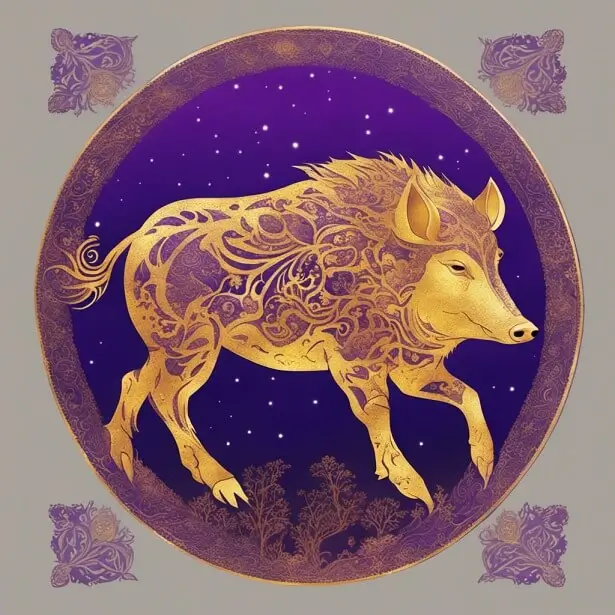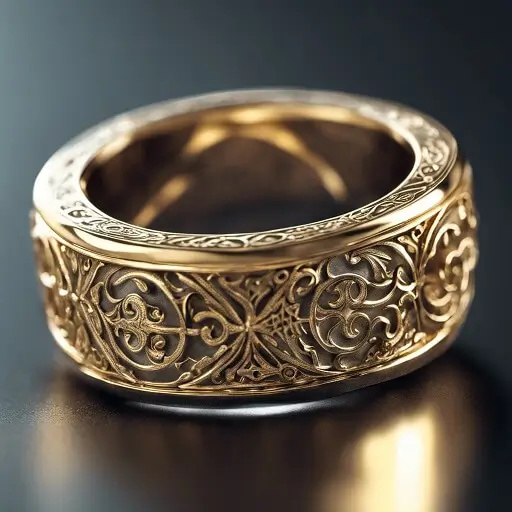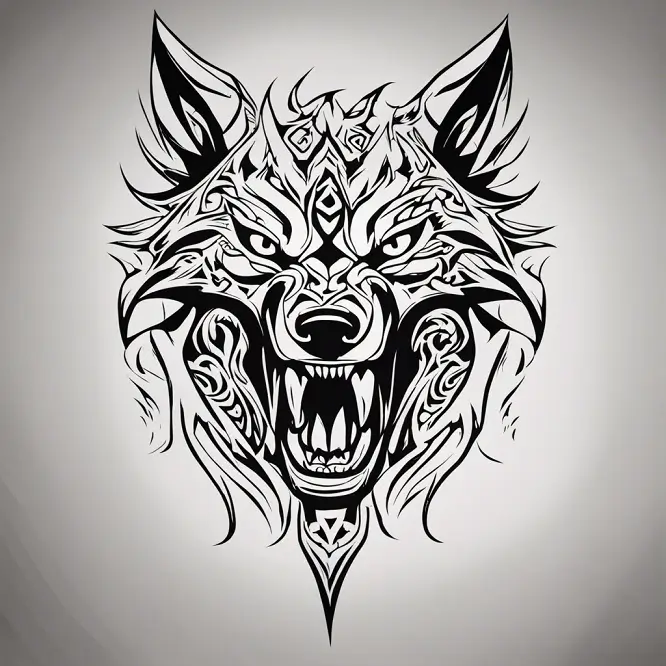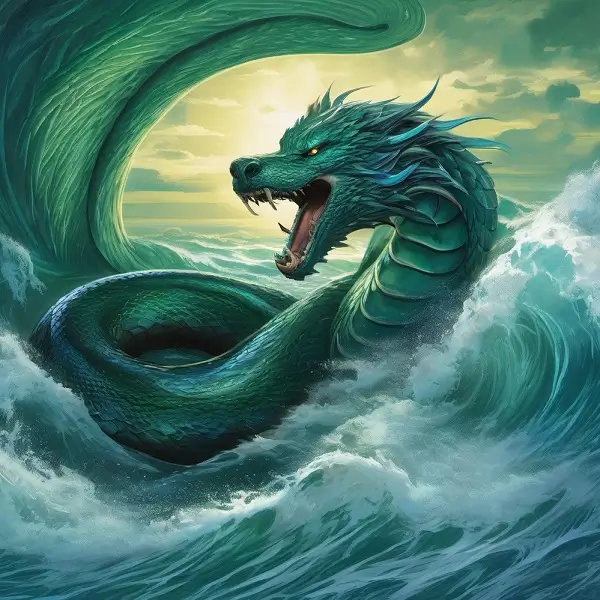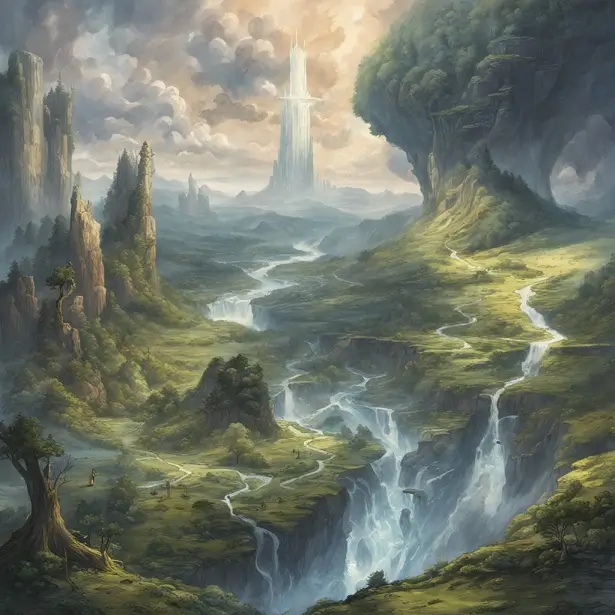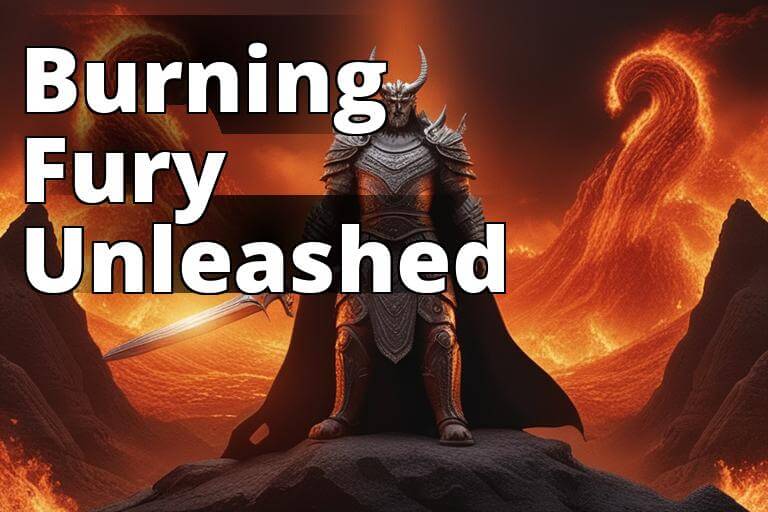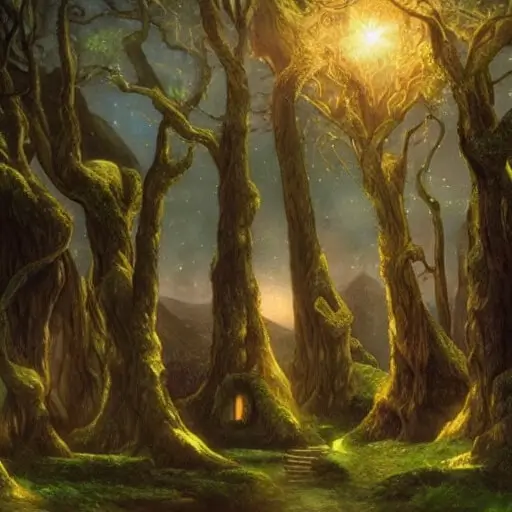The Norse mythology tree, Yggdrasil, is a giant ash tree that connects the nine worlds in Norse cosmology. Yggdrasil is mentioned in the Poetic Edda, compiled in the 13th century from earlier traditional sources, and the Prose Edda, written by Snorri Sturluson.
In both sources, Yggdrasil is often described as a symbol of life, growth, and continuity. The well-being of the universe is closely tied to that of Yggdrasil.
When the tree trembles, it signals Ragnarok’s arrival, the destruction of the universe.
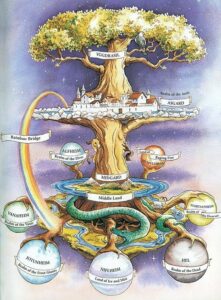
Yggdrasil and the 9 worlds
The etymology of the name
According to tradition, the figure of the mighty tree is related to that of Odin, the main deity of Norse mythology.
Odin, in order to take possession of the meaning and the power of runes, remained hanging on the tree for nine days and nine nights wounded with a spear, hence the origin of the name Yggdrasil, Yggr means “terrible” one of the many names of Odin, while drasil means horse, therefore the name Yggdrasil can be translated as “ Horse of Odin”.
The 3 wells of Yggdrasil
Yggdrasil is guarded by three wells:
The Well of Wisdom, Mímisbrunnr
The Well of Fate, Urdarbrunnr
Hvergelmir (Roaring Kettle), the source of numerous rivers.
Urdarbrunnr
The first well that nourished Yggdrasil was Urdarbrunnr or also called the Well of Urd. Inside lived three Norns: Urd “Past”, Verdandi “Present”, and Skuld “Future” associated with the power to weave the fates of all creatures in the cosmos.
The Norns watered Yggdrasil daily so that it would not die. The location of this well varied according to the narratives.
Some claimed it was a lake below the tree, others said it was near Asgard or Midgard, and still others said it was above the tree itself and a root bent skyward to reach it.
The gods hold their court there every day. The Æsir ride up to that place every day over the bridge Bifrost.
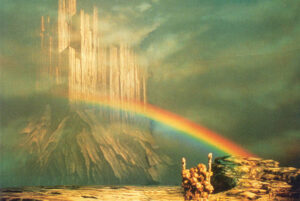
Asgard and Bifrost in Otto Schenk’s interpretation of Wagner’s drama Das Rheingold
Hvergelmir
Also called bubbling boiling spring, was actually the first well to exist in the cosmos. In the Prose Edda, was mentioned that Cold temperatures caused the well’s water to freeze, forming Niflheim long before the other wolrds were created.
The rivers associated with Élivágar flow from this well (11 rivers in total) and also serve as the source for one of the three roots of Yggdrasill, it is constantly fed by the drops of water that fall from the antlers of the deer Eikþyrnir.
Near Hvergelmir’s well was Nidhogg, the snake-like creature. Nidhogg was the serpent dragon that gnawed at the root of Yggdrasil with the hope of bringing it down. But no matter how hard he tried to chew through the roots, the tree remained as straight as ever. Only during Ragnarok did Yggdrasil tremble.
Mimisbrunnr
Mimisbrunnr well also called the well of Mimir was the spring of wisdom because it contained the holy water of knowledge and wisdom.
Whoever drank the water from the well would become omniscient. But to do this it was necessary to make a sacrifice to the guardian of the well.
Odin made a deal to exchange his eye with Mimir, the guardian of the well, so that he could drink the holy water and become extremely wise himself.
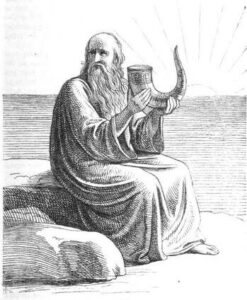
Giant Mimir guardian of the well
Creatures surrounding Yggdrasil
The tree is surrounded by various animals, which protect it, draw life from it, or threaten it. Starting at the bottom, among the roots we find Níðhöggr, the snake that bites and erodes the roots of the tree, thus bringing Ragnarǫk, the end of the world, closer.

Nidhogg
Other snakes help the Níðhöggr, among them Göinn and Möinn, sons of Grafvitnir, the wolf of the caves, then Grabakr and Grafvollod, devious digger of holes, Ofir with the wrapping coils, Svafnir, with the lethal bite.
Consequently, the roots of the tree are rotten and diseased due to these animals. Higher up two important animals graze from the branches of Yggdrasill, the goat Heidrun and the deer Eikthyrnir.
Heidrun is known because Met, the drink sacred to the gods, flows unendingly from her udders. From the horns of Eikthyrnir, instead, flows the water that feeds the source Hvergelmir, from which then depart all the rivers of the world.
Four other deer then leap between the branches, eating the leaves: Dáinn, Dvalinn, Duneyrr and Duraþrór.
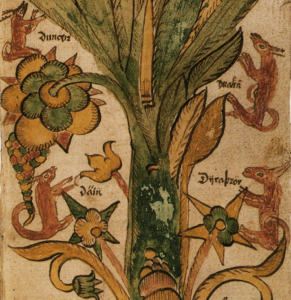
Dáinn, Dvalinn, Duneyrr and Duraþrór
Without Yggdrasil there would be no cosmic order, for this, on top of the tree stands an unnamed eagle, who is wise and has knowledge of many things. Vedrfolnir a hawk sits between its eyes.
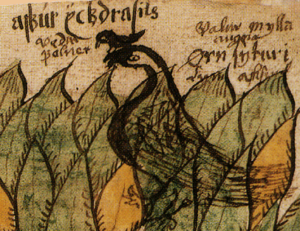
Vedrfolnir
Not far away is Víðópnir, a golden rooster whose crowing will announce Ragnarǫk, the end of the world.
Between the great eagle of the summit and Nidhogg there is a continuous exchange of bad words, fomented by the very fast squirrel named Ratatoskr, who acts as their messenger, running up and down the trunk of the tree and reporting now to one and now to the other their respective offenses.
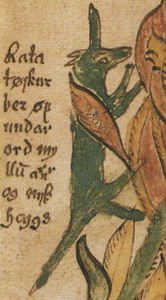
Ratatosk
Is Important, however, to emphasize how the triad tree-eagle-serpent seems rooted in human consciousness from the earliest times: the Sumerians, in the poem “Inanna, Gilgamesh and the underworld” tell of how in the sacred tree Huluppu housed a snake reluctant to any spell, a creature not well defined (perhaps an owl) and the storm bird.
It is also said that the Aztecs realized they had found a new homeland when they saw a cactus on which rested an eagle with a snake in its talons.
The tree is divided into three parts: Niflheim (root), Midgard (trunk) and Asgard (top). We can also see in this the representation of the cycle of birth, life, and death.
Yggdrasil has three roots
The branches of the tree extend all over the world and its roots reach out to different parts, one root goes to Midgard, where men live, another one to Utgard, where giants live and the third root is located in Niflhel, where Hel, the goddess of the underworld, lives.
The root located in the meanders of the underworld (Hel), in the real of the dead, is infested with many evil snakes, creeping incarnations of the forces of evil.
These reptiles gnaw and inject their venom into the branches of the ash tree causing it terrible pains and enormous suffering. At the head of these monstrous reptiles, there is Nidhhogg, a serpent dragon very skilled in gnawing the bark with his sharp teeth will continue his slow and exhausting work of destruction.
The second root is located in Jotunheimr, here the tree can count on another source with magical powers, the well of Mimir, guarded by the jötunn Mímir, the well is the source of his wisdom. In this well, Odin one day drank and acquired unlimited knowledge, but to do so he had to leave his eye as a pledge to the guardian Mimir
The third root is located in Asgard. Here is also located the miraculous well of Urd. Near the revitalizing source, you can see two birds that often drink water from the source, have a beautiful white coat.
They are the ancestors of the swans, birds consecrated for their purity to the Gods. In the spring, moreover, every day the three Norns draw the divinities who rule the site of the Gods and of men.
During the day, they carve runes on wooden tablets, or weave linen cloths or play among themselves, putting the fate of men up for grabs.
They also water the roots of the ash tree, which are therefore covered with a thin layer of white fertilizer. However, the legends imply that the Norns’ efforts to maintain Yggdrasil would fail.
It was impossible for them to maintain the tree forever against the combined forces that attacked it and eventually, the tree itself would succumb to fate, leading to Ragnarok.
Nonetheless, Yggdrasil would not die completely. It was implied that when the rest of the world was rebuilt after the battle, the tree would return to health and flourish again.
Yggdrasil and the Nine Worlds
As mentioned Yggdrasil crosses all nine worlds, Asgard home of the Æsir tribe of gods, but also the Vanaheim where the Vani dwell.
He also passes through the worlds of Ljosalfar (Alfaheimr) and Dokkalfar (Svartalfaheimr), in the middle land of Midgard, the kingdom of mortals until he reaches the ends of the world in Jotunheimr, where the giants’ reign.
Finally, he descends into the world of the underworld, the Muspellheim where the forces of evil reign, passing through Niflheim, the region of perennial mists and the meanders of the underground of the earth’s crust inhabited by the dwarves.
Helheim, the realm of the dead
Svartalfheim, the world of dwarves and dark elves
Niflheim, the world of icy fogs, cold, darkness, mists and terror
Jötunheim, the world of giants
Midgard, the land, the world of men (also known as Mannheim)
Vanaheim, the place of the Vanir (Norse gods know for fertility and magic)
Alfheim, the palace god Freyr and the elves of light
Asgard, the realm of the gods (Æsir).
Muspelheim, the primordial world of fire
Yggdrasil and the Ragnarök
The dragon would finally gnaw through the roots of Yggdrasil and the entire mighty tree would crack and fall during the battle of Ragnarok, in which The world would be destroyed, and the Aesir gods would be devoured by Fenris the Wolf and the Midgard Serpent, their ancient enemies.
Shop Viking Jewelry
Are passionate about Vikings or Norse mythology? Finding the ideal piece of Norse Jewelry can be challenging, especially if you lack inspiration or don’t know where to look. Surflegacy, on the other hand, has you covered. We have a wide range of Viking Jewelry in various styles, shapes, colors, and materials, to accentuate your Viking spirit and look.

